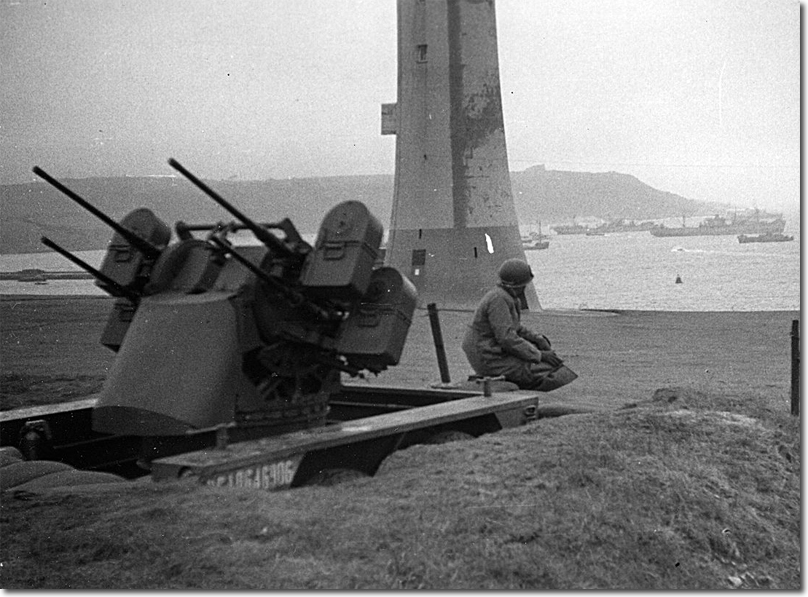|
|


|
| Plymouth like most ports to the West of Portsmouth was assigned to the Americans in the build up to D-Day. They began arriving in 1942 and took over a lot of the defences against attacks from the Germans. High altitude bombing did continue but a new threat of Tip and Run raids began to be an issue as the German Luftwaffe switched their tactics. These tended to be low flying fighter-bombers who came in fast and low and looked for targets of opportunity to strafe and bomb before departing rapidly. The pilots hoped that these sudden strikes would catch the defenders unaware and that they would be gone before they could respond in earnest. This change of tactics meant that the powerful anti-aircraft guns that were used against high altitude bombers needed to be supplemented by smaller calibre guns that had a high rate of fire and could catch lower and faster flying planes. This photograph shows just such an American anti-aircraft gun being placed on the Hoe. German planes could and did fly up towards Rame Head and then pop over at Cawsand and look for shipping or supply depots to attack before disappearing as fast as they appeared. The Americans also wanted to deter reconnaissance planes from discovering too much about their preparations for D-Day too. |
Empire in Your Backyard: Plymouth Article
Armed Forces | Art and Culture | Articles | Biographies | Colonies | Discussion | Glossary | Home | Library | Links | Map Room | Sources and Media | Science and Technology | Search | Student Zone | Timelines | TV & Film | Wargames